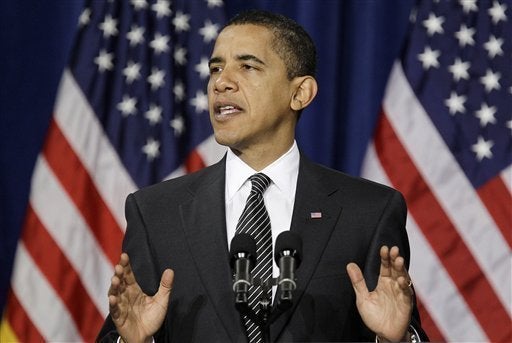
By Teryn Norris & Adam Zemel
On Tuesday, President Obama signed the historic American Recovery and Reinvestment Act to avoid a spiraling economic downturn. But is it enough?
No. The Congressional Budget Office projects the U.S. economy will lose $2.9 trillion in total economic output over the next three years (PDF). To close that gap, Obama would need to sign a bill with approximately $2 trillion in total spending. But the current plan is less than $800 billion, with almost $300 billion for tax cuts. A recent report (PDF) by the chief economist at Moody's Economy shows that while one dollar of public spending can boost GDP as much as $1.70, every dollar of tax cuts can increase GDP by only $0.30 to $1.00. In other words, spending is up to five times more effective than tax cuts at boosting GDP.
So we have a stimulus bill that contains about $500 billion of public spending and $300 billion of dubious tax cuts. Given the CBO's projected $2.9 trillion output gap, calling the bill weak is an understatement. This gap presents a danger not just to the economy. If the economy is still dragging in two years, and the stimulus is publicly perceived as a failure, Democrats could not only lose the mid-terms in 2010, but the role of public investment could be discredited for years to come.
Why is the stimulus so timid? Of course, a share of the blame goes to Republicans, who continue to cling to market fundamentalism, a failed and outdated economic ideology obsessed with tax cuts, deregulation, and smaller government. But the overarching problem is that President Obama currently lacks an economic philosophy. Obama and his advisors made a critical miscalculation by allowing the political goal of bipartisanship to trump urgent economic necessity and the need for a new economic philosophy. If Obama had shot higher with his initial spending goal -- let's say $2 trillion -- and made a principled case about the role of public investment in laying the foundations for growth, Republicans and centrist Democrats could have bargained it down from there -- to say, $1.5 trillion.
President Obama's next steps are critical. To avoid discrediting the role of public investment, Obama needs to continually advance a new, progressive governance philosophy based on long-term public investments in areas of strategic growth and productivity -- such as clean energy, advanced infrastructure, health care, education, information technology, and other areas of science and technology. These types of public investment are critical not only for growing out of the current recession, but also for promoting U.S. prosperity and strength for decades to come -- just as public investments did for most of the post-war period, from airplanes and highways to microchips, the internet and biotechnology. All of this will require a level of clarity, vision and strong leadership from Obama that was not on display for the stimulus debate.
Establishing a new era of productive public investment requires a systematic overhaul of the federal budget structure and process. Ever since the rise of market fundamentalism, deficit hawks, and the passage of the 1990 Budget Reconciliation Act, the federal government's ability to make long-term investments has been critically weakened. The result has been significant underinvestment in areas like infrastructure and R&D, with federal investments in major non-defense physical capital declining 20% over the period between 1980-2000 compared to 1960-1980.
Obama should start by restructuring the federal budget to include a "capital investment budget" -- separate from PAYGO and the annual appropriations process -- which would be used for long-term investments in physical capital, R&D activities, and possibly human capital (education). Currently, the federal government hardly distinguishes between short-term spending and long-term investment. But like any smart and responsible business or family, the federal government needs to make smart choices between short-term consumption -- which satisfies current operating expenses and social needs -- and long-term investments, which yield long-term economic benefits and increased productivity.
If Obama aims to successfully achieve a transformational presidency and launch a new progressive age, he must offer a new economic governance model that gives America a fresh start. Market fundamentalism is dying, but progressives haven't yet offered an economic philosophy to take its place. Obama should start by overhauling the federal budget system and offering a clear vision and narrative about the role of public investment in building new American prosperity -- and he should act quickly before the historic opportunity has passed.